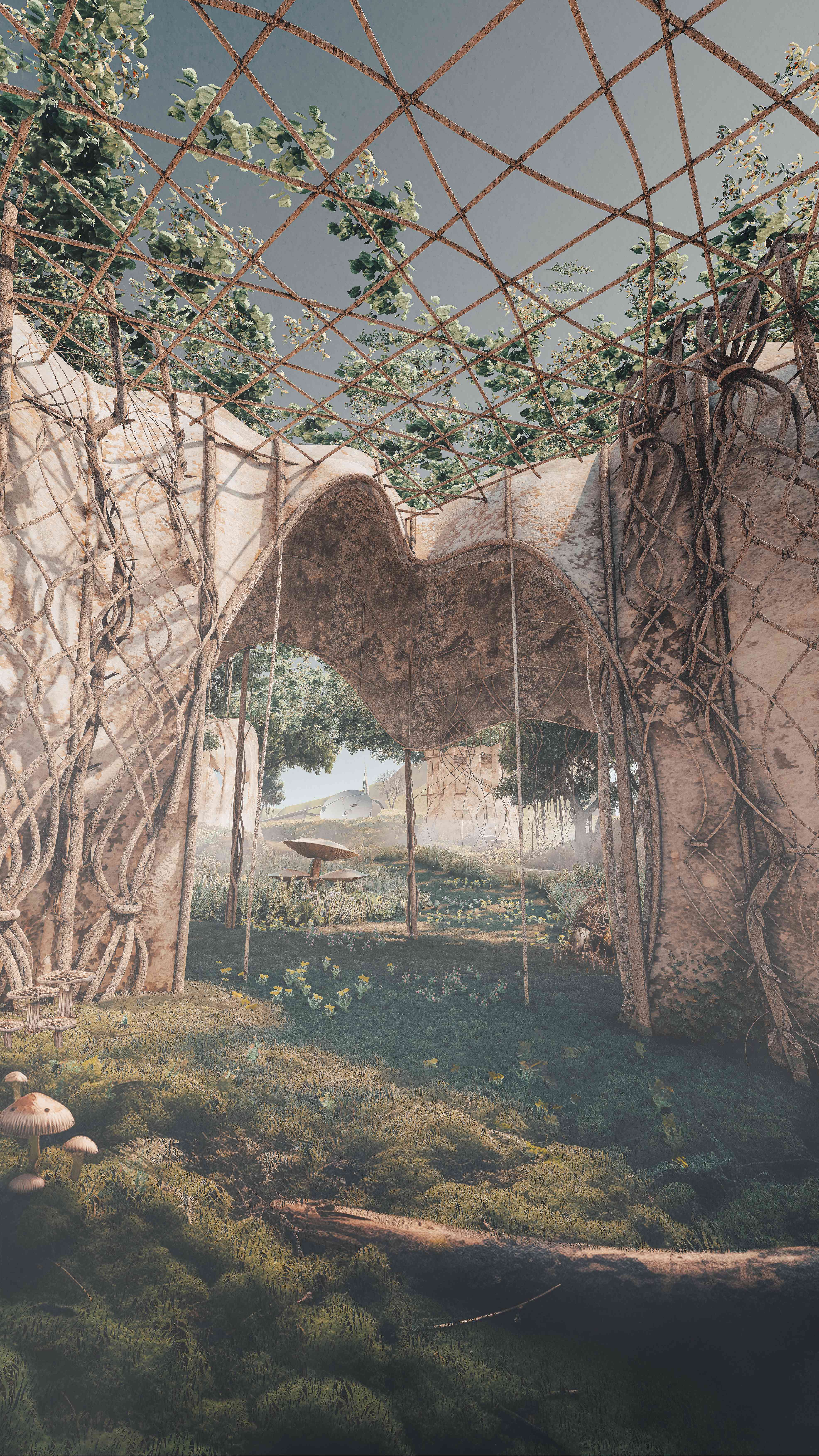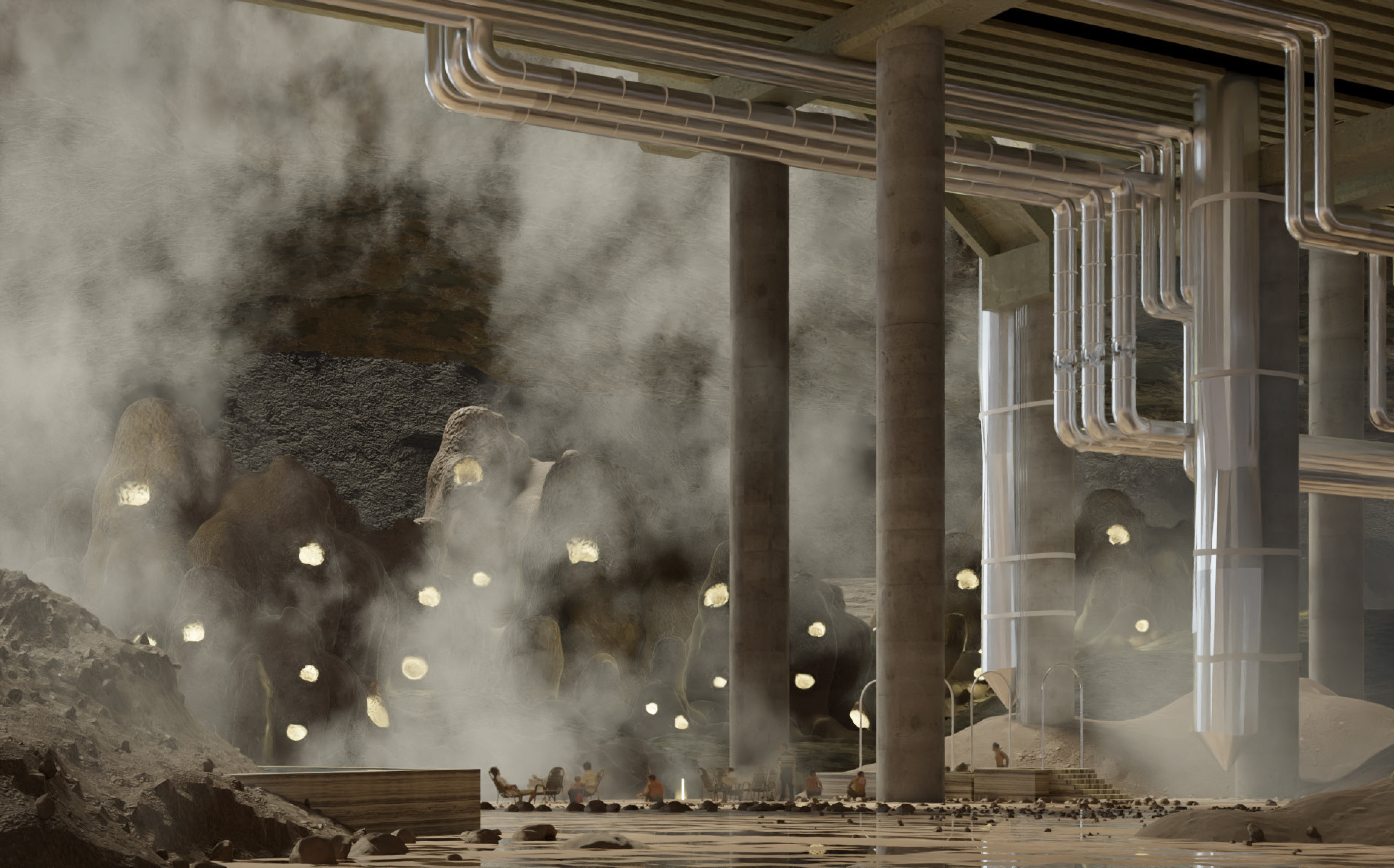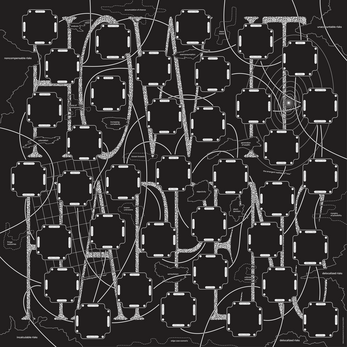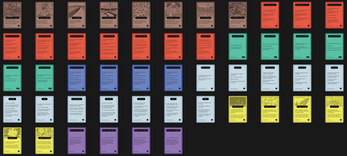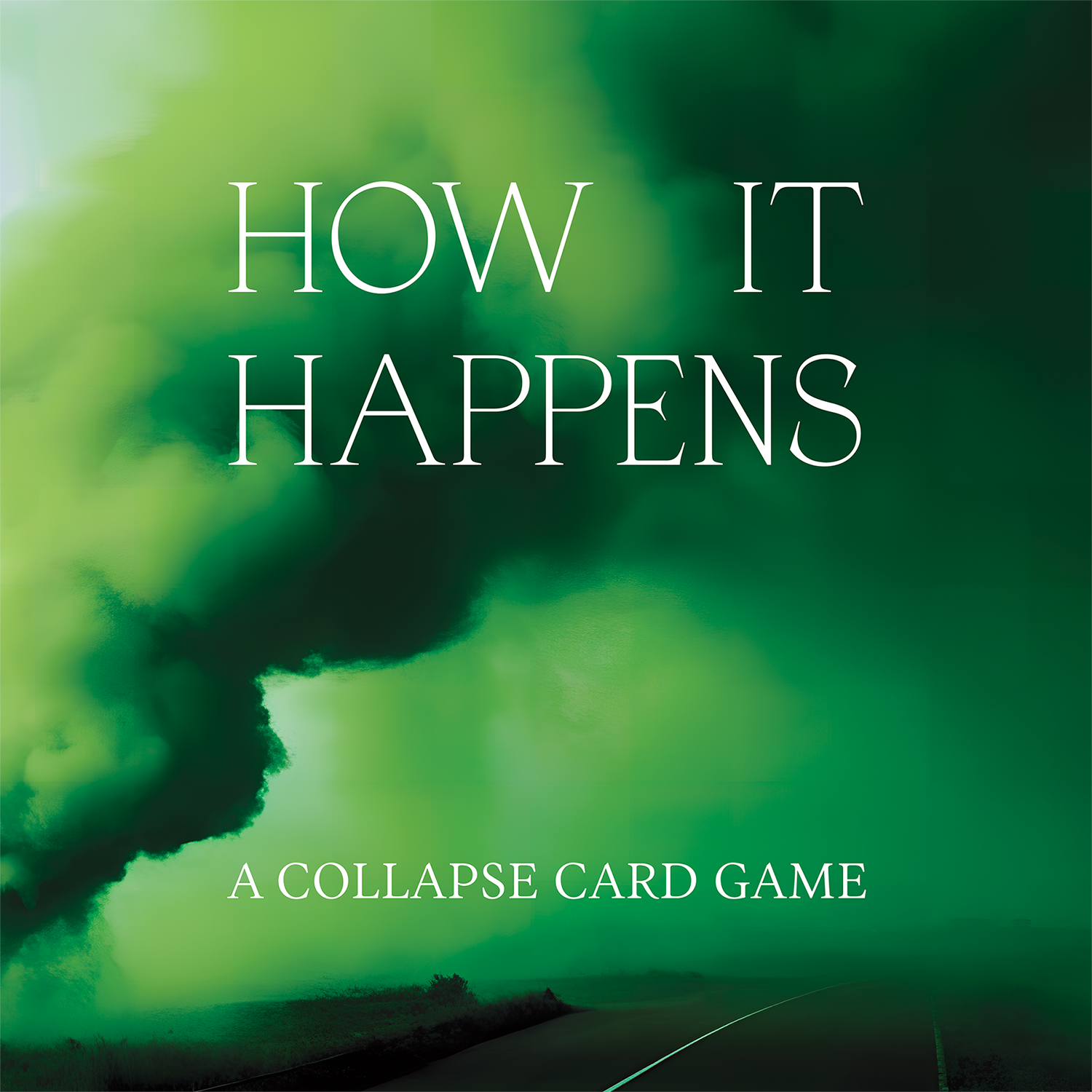
How It Happens
A downloadable game
Setting The Stage
The year is 2234. Over the course of a year, and isolated to the United Kingdom, a narrative collapse begins to set in.
The population of the U.K. is no longer able to process more than three sentences of information at a time. All vital information is sequestered into the country’s academic cathedrals of expertise, and researchers are tasked with working around the clock to make sense of the cascading information coming in from unaffected countries. Reading has become a specialized task and a new cultish religion known as The Knowledgeable takes hold. Compounding this collapse of information intake is an internally launched cyber attack that renders the perception of all spoken language backwards.
You are a Hedonistic knowledge worker hoarding information after the collapse. You refuse to interact with The Knowledgable or the desperate researchers
- Excerpt summary from playthrough of How it Happens
How It Happens is a game for up to four players, who tell the story of how their world collapsed, then role play the ways they navigate that collapsed world.
Game Development Background and Inspiration
How It Happens takes inspiration from the Nomic-like 1000 Blank White Cards (a game where rules created emergently), and Everest Pipkin’s The Ground Itself and World Ending Game.
On the first day of a collapse camp in rural France, a stack of cards were laid on the table. Everyone was told that we would use these cards later during camp to play a game. During the first week of camp, we wrote terms, definitions, actions, ideas, prompts, etc., all related to our study of collapse.
One night during camp, everyone was distributed one card each, without instruction. They were either a collectivist or an individualist. From that point on, everyone was periodically slipped another card from the stack. The group was compelled to morph and modulate, on the fly, to make sense of the situation they had both self-constructed and been thrown into, catching glimpses of themselves and being inflected by each other in the notes that had been scribed.
The experiment itself was a delirious display of dissociated egoism, structureless tyranny, and reactionary rebellion wrapped up in fits of possession, and is characterized in some detail in “Collapse Camp”, night three, in the companion magazine Crude Futures.
Though left in a daze, one of the magazine's editors, Mina Miller, was able to synthesize the experience during her dreams that night. That dream laid the foundation for conceptualizing the game’s world building element.
Collapse card “game” spell
Something that illustrates the slipperiness of defining and anticipating collapse with a variety of inputs, scales, accelerants, declarants and temporalities.
Draws on the article defining collapse from pov/id of system. maybe tie into magic/tarot deck/a quest towards heaven. Qualitative over competitive. Somehow people can pull a general category then build the different vectors into it. Choose your own collapse.
Five categories of cards:
Types of collapse: Social, enviro, ecological, narrative, vibe, economic, energy, political, of manners, hierarchies, of the ruling class, of context, etc.
Scales of collapse: From cellular to interplanetary, via national, continental, global, city-wide, networked, etc.
Temporalities: A microsecond to an eon, gradual, phased, overnight, staggered, etc etc (+exogenic etc).
Decelerants: Resilience and adaptations that may not prevent collapse but push things back/delay: early warning signals, resilience, fireman’s switch.
Accelerants: Whether it’s rigidity, climate conditions, networked financial systems, a ruling family making poor governing decisions (Sri Lanka): things that may not be inherent to the collapse itself but helps it on its way or prevents detection and/or action.
During another evening, everyone played an abbreviated iteration of Everest Pipkin’s The Ground Itself, a table-top world building game that guides players through the process of creating a place and what “echoes and traces we leave for others after we are gone.”
Pipkin’s work is part of a rich tradition of world building games that explore the terrain of post-collapse environs, including their own collection World Ending Game, and Buried Without Ceremony’s 2013 The Quiet Year, games that the editors of Crude Futures recommend for those seeking other avenues for engaging with collapse in an interactive manner.
The Ground Itself is an excellent example of co-creative processes for constructing places and scenarios, and influenced the structure and mechanisms of our game in marked ways. In particular, the game adopts two key features:
- Players may only ever ask clarifying questions when someone is describing a change in the world
- A written record of the world that was built is kept
These features result in a sense of collectively held and mutually supported subjectivity, and artifacts for integrating discussions of collapse into conversations outside the game. Each of these features allow for a discussion of collapse that embraces and retains a certain kind of conversational complexity vital for confronting the change and necessary adaptation brought on by collapse. The following instructions lay out the progression of How It Happens and in turn, how we respond.
Digital Resources and Pricing
Digital copies of the following resources are or will be made available for download or review:
- Make It Yourself Index (suggested donation $1)
- Game Instructions (suggested donation $1)
- Game Board (designed by Matīss Groskaufmanis and available for $7)
- $7 split = Matīss: $4 / phm: $3
- Forthcoming†: Print-at-Home Sheet of Designed Cards (designed by Marcelino Llano and available for $10)
- † will be listed for download after all physical copies of the game have been sold
- $10 split = Marcelino: $5 / phm: $5
A gallery of player-generated artifacts from playthroughs and adaptations of How It Happens embedded below for review and inspiration.
Physical Copies of How It Happens
How It Happens is part of the Crude Futures project, and supported by the New Models community fund.
You can buy a physical copy of the game as part of the limited edition Crude Futures bundle:
- https://newmodels-io.myshopify.com/products/crude-futures-bundle
- Note: unfortunately, physical copies of the game board are not available to purchase at this time
More Information
About Crude Futures:
Noticing, wiping with a finger, and placing to its tongue a lick of the fine dust of existential worry that has settled over the last three years across every common object, every situation, every idea for the future, the Crude Futures magazine notes the taste: at once bitter and tangy, with a complex depth to it worth pausing on. Within days the magazine is treating the dust like food, like common fuel: it finds itself with paranoiac force scrawling hyperglossic diagrams of the global polycrisis, engrossed in a card game that aims to reshuffle anxieties via collective narrative, theorizing pathological institutional form so as to explain apocalypse, musing on sacrifice and guilt, busying itself with wikipedian mania with shipping routes and their dissolution, penning a collection of short stories, writing about deadly wasps, collecting polaroids of desolate Norwegian landscapes. All this it marshals into itself.
Crude Futures Online
New Models
How It Happens Credits
- Development and text: phm
- Card design: Marcelino Llano
- Board design: Matīss Groskaufmanis
- Additional help: Mina Miller
- Card illustrations: in collaboration with MidJourney
- Play testing: Crude Futures Editors and New Models Council
How it Happens Playthroughs / Events / Exhibitions
- 27 July 2023 - Soft-launch presentation and playthrough of How It Happens at Trust, Berlin
- 28 July 2023 - Official launch-party for Crude Futures and How It Happens as part of 0.5 DECADE – A NEW MODELS ANNIVERSARY at Trauma Bar und Kino, Berlin
- 20 September 2023 - presentation and playthrough of How It Happens at Post-office, Amsterdam
- 01-21 November 2023 - exhibition, playthrough workshops, and presentation of How It Happens as part of The Seashore of Endless Worlds at Le Commun, Geneva
---
Player-Generated Artifacts Gallery
Three Worlds
Three Worlds—made of trees, plants, soil—were created by playing a modified version of How it Happens in a pedagogical setting of Studio 3A at the Aarhus School of Architecture in Denmark. The MA level studio used How it Happens as a framework for building post-growth worlds that would inform architectural design projects.
Tree World
Oda Johanne Hegge, Frida Nordvik, Anna Vang Toksvig, Rebekka Brøndsted Lodahl, Max Groos.
© Arkitektskolen Aarhus, 2023
Plant World
Charlotte Sandbrekke, David Bjelkarøy, Westervik, Frederikke Adamsen Hammer, Ragnhild Andreassen, Lina Cong.
© Arkitektskolen Aarhus, 2023
Soil World
Guro Skotte Nørsteng, Toya Causse, Charlotte Emily Carol Vint, Amalie Andreasen, Ole Wilhelm Tübbecke.
© Arkitektskolen Aarhus, 2023
Adding Your Own Player Generated Artifacts!
Have you played How It Happens and have image, text, audio, or other media artifacts that came out of your playthrough? Would you like them to be included in this gallery of player-generated artifacts?
- Send an email to phm at /centralizedhosting/gmail/com/ with your artifacts and the Crude Futures editorial team will consider adding them here.
| Status | Released |
| Category | Physical game |
| Release date | Jul 28, 2023 |
| Rating | Rated 5.0 out of 5 stars (1 total ratings) |
| Author | phm |
| Genre | Card Game |
| Made with | Adobe Illustrator |
| Tags | collapse, world-building |
| Average session | A few hours |
| Languages | English |
| Links | Physical Copies |
Download
Click download now to get access to the following files:

